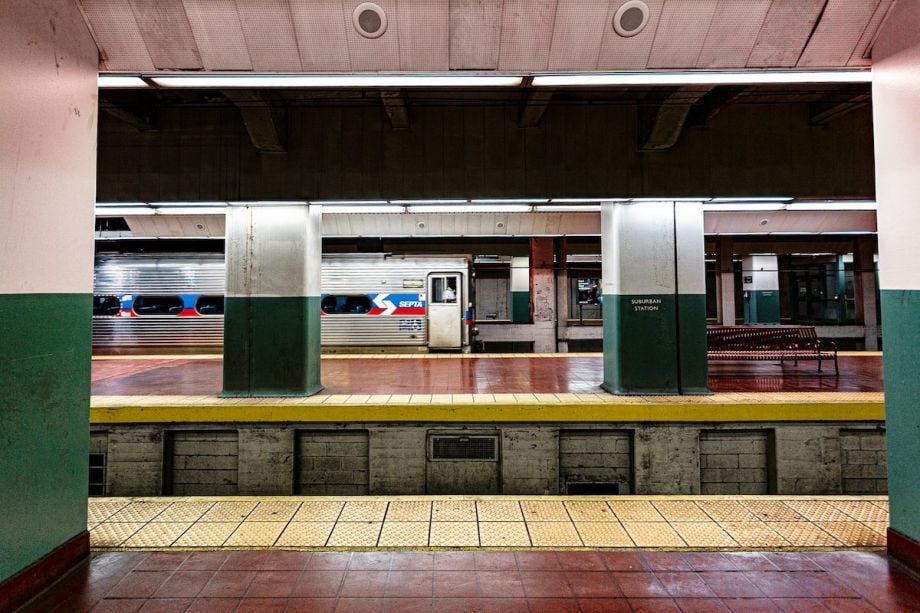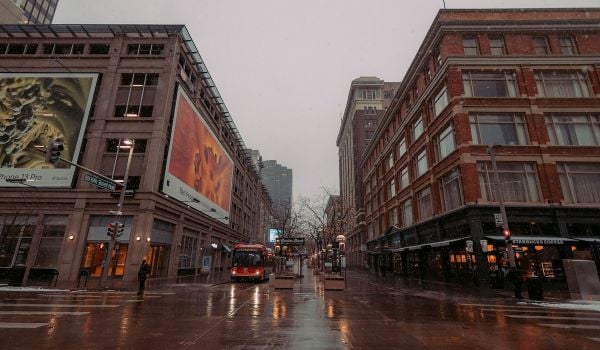Getting to where you need to go is a matter of economic and social justice. Now, low-income Philadelphia residents are getting a boost.
In August, the city began a two-year Zero Fare pilot program, distributing 25,000 SEPTA Key cards (valued at $204 each) for unlimited free rides — and the majority of participants don’t need to take any action to enroll.
“Transportation has been identified as a barrier for folks seeking employment, especially in Philadelphia, because of the high poverty rate,” says Nicola Mammes, Zero Fare program director. Over 20% of Philadelphians live below the poverty line, and 50% of those households don’t own a car.
The cost burden is real. Studies estimate that low-income Americans spend a higher proportion of their income on transportation: 30% of everything they take home after taxes. To address this need, other cities like Los Angeles are rolling out mobility wallets that allow people to spend a set amount of money every month on eligible forms of transportation.
Participants in Philly’s Zero Fare pilot must be 18 to 64 years old, have an income at 150% or less of the federal poverty line, and be Philadelphia residents. The program is funded by the city for a total of $62 million till June 2025 with the twin goals of increasing mobility for low-income residents and investing in SEPTA, the regional transit authority for Southeastern Pennsylvania.
As of mid-April, participants have taken over 1.8 million trips.
A unique approach to enrollment and engagement
Unlike many similar programs, there is no need to apply. Instead, the city used a lottery system to select 90% of participants from a pool of eligible residents enrolled in a qualifying low-income benefits program. For the other 10%, the city worked with community-based organizations to reach those who might not be eligible due to immigration status.
This approach runs counter to how other types of benefits are normally distributed. Many similar programs require an application process to determine eligibility, which can prevent the people who most need the program from accessing it.
“The population that is eligible for this benefit — they oftentimes are hard to reach,” Mammes says. “And really, that’s also why we designed the program the way that we did — that it would be on us to figure out how to reach them.”
Because people are automatically enrolled, the city is conducting extensive outreach to educate participants. First, the city sends a postcard notifying a participant that they’ve been selected and giving them basic information about the program. Then, the Office of Community Empowerment and Opportunity sends a series of text messages and calls them. If recipients don’t use the card, then the city does another round of outreach to encourage adoption.
The program started with outreach in August, then mailed out the first batch of 1,000 cards in September, with distribution scaling up month by month to reach the 25,000 goal.
So far, there has been an adoption rate of about 50%, according to Mammes, with distribution and outreach still ongoing. If someone receives a card but doesn’t use it even after additional attempts to reach them, the city can deactivate the card and pass along the benefit to someone else.
The program is only a two-year pilot, but the city is seeking more funding.
“We’d love to see it expanded to be an entitlement,” says Connor Descheemaker, coalition manager for Transit Forward Philadelphia.
With only 25,000 total participants in a city with the highest poverty rate for a big city in the nation, the need is much higher.
“The more that we can have people just receive these entitlements, the more we’re able to connect them to opportunity, give them the access to reach more jobs, reach more healthcare facilities, reach more grocery stores,” Descheemaker says. “That’s how we’re getting new people on the system from the folks experiencing poverty.”
Reaching Philly’s immigrants and refugees
For 10% of participants, the city partnered with community-based organizations to reach people who might not be enrolled in a qualifying public benefits program.
One of those organizations, the Southeast Asian Mutual Assistance Association Coalition, serves immigrant and refugee communities in Philadelphia.
“Our clients, they don’t have U.S. citizenship,” says Tammy Lam, the group’s community resources coordinator. “To qualify for Medicaid and food stamps and all the public benefits, you have to have [a green card] within a certain amount of years, and then you may qualify or not based on income. So, it’s very hard to get services.”
So far, participants report that the pass has made it easier to get to medical appointments.
“They say that that’s very helpful. It is a major need in the city… So, it has made life a bit easier for these individuals.”
Most of the organization’s clients walk or use public transportation and pay with cash, according to Lam. This means that they pay more per ride. While a regular SEPTA fare is $2, cash customers pay $2.50 and don’t get two free transfers. That means that cash customers could end up paying $7.50 for what would be a $2 trip.
“All these things add up, especially for folks who are unbanked or don’t have access to the place where they can even purchase a SEPTA Key card,” says Descheemaker.
Building trust through outreach and education
One of the challenges with the program is getting people to trust that it’s real — yes, you can ride SEPTA for free. No, you don’t have to pay anything.
“We have gotten feedback,” says Mammes. “Just more questions like, ‘I got this in the mail, can you explain this to me? Why did I receive this benefit?… What is it gonna cost?’”
She hopes to offer more customer education going forward so that people who receive a card in the mail trust that there are no strings attached.
“With anything new, you’re gonna get people who are skeptical and have questions. And that’s completely valid,” she says.
Lam saw the same thing with her clients.
“A lot of our clients are really scared… Some of them are here undocumented, and they’re just trying to make a living and raise their families.”
Lam hopes that in the future, the city can provide more support to partner organizations during the distribution process, including translation for clients who don’t speak English.
“No matter how much you reassured people, they were still scared, like, ‘Oh, am I going to get deported if I get this card? Will people know that I’m using it? Is the government tracking me?’”
According to Mammes, the city worked with partner organizations to develop a strategy for distributing the cards and hopes to adapt the process moving forward based on what the city learned in this first phase.
Bolstering ridership on SEPTA
Like transit agencies across the country, SEPTA is facing a fiscal cliff, with money from federal pandemic relief funds set to run out in July. The Zero Fare program is one way for Philadelphia to invest in SEPTA while encouraging new ridership as the agency struggles to return to pre-pandemic levels.
The idea is to create a virtuous cycle where “ridership begets ridership,” according to Mammes.
Unlike other cities, Philadelphia is extremely limited in its ability to directly fund transit, says Descheemaker, due to a state legislature split along partisan lines.
“If you look at our FTA grant dollars, you’ll see that we as an agency sector are disproportionately dependent on state subsidies,” Descheemaker says. “In fact, we are preempted from raising dedicated local taxes or fees to raise money for transit.”
The city has also invested in the Key Advantage program, giving all city employees SEPTA Key cards, another way to leverage local dollars to get people back on the system. Last year, the city reported that Key Advantage card holders were riding the system 13% more on average and using it on nights and weekends.
Increasing ridership through the Zero Fare program could enhance trust and safety in the system as a whole, adding “eyes on the street” according to Descheemaker. The more people ride it, the safer it gets; the safer it gets, the more people ride it.
“When people are alone on the system, or they don’t see anybody who cares or seems to want to get involved, then they’re not going to treat their area with respect if they don’t feel respected while using it.”
This story was produced through our Equitable Cities Fellowship for Social Impact Design, which is made possible with funding from the National Endowment for the Arts.

Maylin Tu is Next City's Equitable Cities Reporting Fellow for Social Impact Design. A freelance reporter based in Los Angeles, she writes about transportation and public infrastructure (especially bus shelters and bathrooms), with bylines in the Guardian, KCET, Next City, LAist, LA Public Press and JoySauce. She graduated with a BA in English from William Jewell College in Missouri.
Follow Maylin .(JavaScript must be enabled to view this email address)

















Add to the Discussion
Next City sustaining members can comment on our stories. Keep the discussion going! Join our community of engaged members by donating today.
Already a sustaining member? Login here.